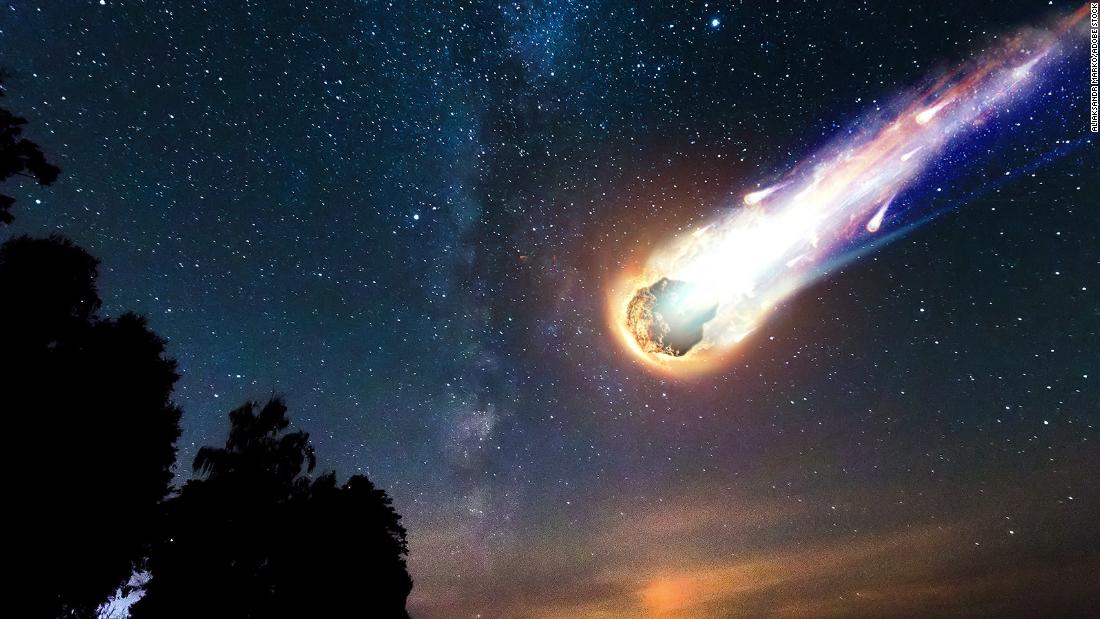(CNN) – A meteorite traveled a long way from home to view Earth.
Researchers have discovered the first galaxy to collide with Earth, according to a recently released US space command document. The Interstellar Meteorite is a space rock that forms outside our solar system, which is rare.
This meteorite called CNEOS 2014-01-08On January 8, 2014, Papua crashed off the northeast coast of New Guinea.
The discovery surprised Amir Siraj, who identified the object as a meteorite in a 2019 study he co-authored as a student at Harvard University.
In 2017, Siraj explored “Oumuamua”, the first known galaxy in our solar system, with Abraham Loeb, a professor of science at Harvard University.
Siraj decided to check NASA’s near-Earth object studies database for other galaxies, and within a few days found what he believed to be a meteorite.
High speed
It was the speed of the meteorite that initially caught Siraj’s attention.
The meteorite was moving at a speed of 45 kilometers per second compared to the Earth moving at a speed of 30 kilometers per second around the Sun. He really doesn’t have the speed to go.
Solar centrifugal velocity is defined as the speed of meteorites associated with the Sun, which is the most accurate way to determine the orbit of an object. It is calculated based on the angle at which the meteorite hits Earth. The planet moves in one direction around the sun, so the meteorite may have hit the earth from the front, that is, from the opposite direction the planet is moving, or from behind, moving in the same direction it is moving. Earth.
Since the meteorite hit the Earth from behind, Siraj’s calculations indicate that the meteorite traveled at a speed of 60 kilometers per second compared to the Sun.
Siraj then discovered the path of the meteorite, which, unlike the closed orbit of other meteorites, was in an uncontrolled orbit. That is, instead of orbiting the Sun like other meteorites, it came from outside the Solar System.
“It was probably made by another star, ejected from that star’s planetary system and may have accidentally entered our solar system and collided with Earth,” Siraj said.
Difficulty posting
Lope and Siraj were unable to publish their findings in a journal because their data came from NASA’s CNEOS database, which did not publish information such as the accuracy of the readings.
After years of trying to get the extra information they needed, they received official confirmation from John Shaw, the deputy commander of the U.S. Space Command, that it was in fact a galaxy. This command is part of the U.S. Department of Defense and is responsible for military operations in space.
“Dr. Joel Moser, Chief Scientist for the Space Operations Command, a U.S. space force service unit of the U.S. Space Command, reviewed the analysis of additional data available to the Department of Defense related to this discovery. Dr. Moser confirmed the speed estimate. Shah wrote in the letter.
Siraj went to other inquiries and almost forgot about his discovery, so he was shocked by the document.
“I thought we would never know the true nature of this meteorite. After many of our efforts it has been locked up somewhere in the government, so it was a wonderful moment to see that defense letter with my own eyes,” Siraj said. .
Second chance
After receiving the confirmation, Siraj said his team would submit his findings back to be published in a scientific journal.
Siraj also wants to set up a team to recover a portion of the meteorite that fell into the Pacific Ocean, but acknowledged that this was not possible given the sheer size of the project.
Siraj said it would be scientifically amazing to help scientists discover more about the world beyond our solar system if researchers were able to get their hands on the “Holy Grail of Interstellar Object”.
NASA and the US Space Command initially did not respond to requests for comment.





:quality(85)/cloudfront-us-east-1.images.arcpublishing.com/infobae/KTKFKR763RBZ5BDQZJ36S5QUHM.jpg)